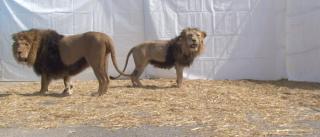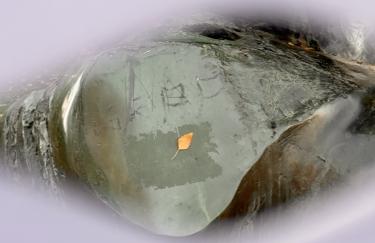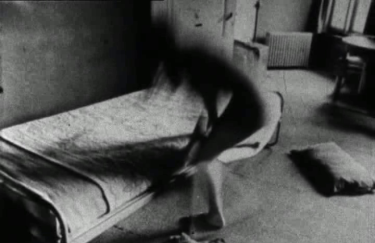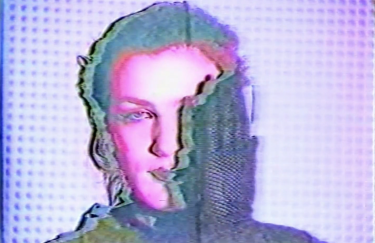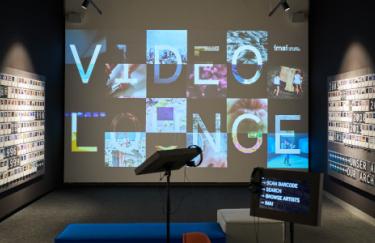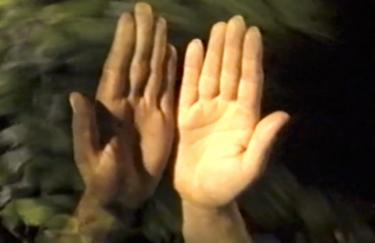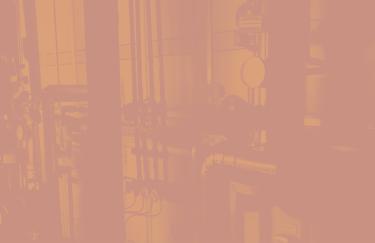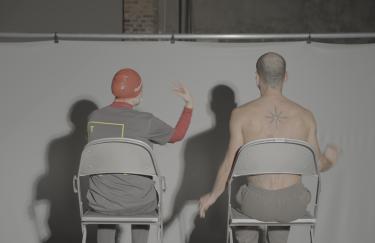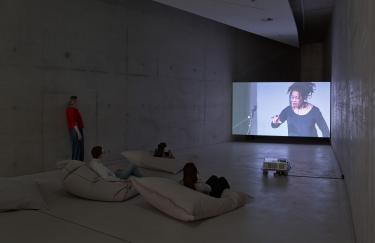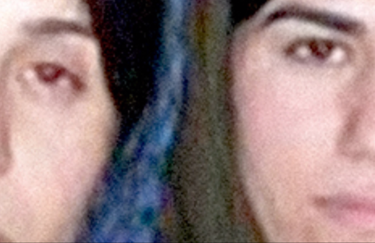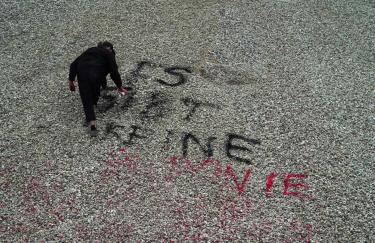A recurring motif in the work of Luzia Hürzeler is the relationship of human being and animal. For example, the artist confronts her cat with a self-portrait made of cat food, conducts field research in a zoo, and in a self-experiment trades her natural environment with that of a trout. The two-channel video installation Die Forelle (2012) shows the synchronous rise and fall of the water level in two containers: the artist is seen in one of them, in the other a fish, and they struggle in turn for oxygen. The main protagonist of Il nonno (Der Großvater) (2009–10) is a grown lion who is confronted with his stuffed grandfather. We are curious: Will the lion “recognize” his relative? How will he react? In fact, he adopts the same posture in front of the stuffed animal, so that the initial “still” of the grandfather lion seems to be brought to life.
In her works Luzia Hürzeler negotiates different aspects of temporality: the individual experience of the flowing of time, human striving for eternity, and the desire to overcome time, which is in contradiction with the inevitability of our transience. The artist skillfully combines depictions of motionless motifs, which evoke the sculptural quality and standstill of time, with actions (that have) to be performed within a certain time.
A sculpture has to remain still (2008–9) is a two-part video work about a Brazilian street artist who performs as a “living sculpture” on public squares in Rome. In addition to a fifty-minute video of his physically strenuous act, which took place in a nonpublic, neutral space, Luzia Hürzeler recorded an interview with the artist. In it he tells of his mental journeys during his long perseverance in motionlessness and of the reactions he experiences from the street audience.
The video works I always (2009–10) and L'occhio del Pantheon (The Eye of the Pantheon) (2008) in were also produced in Rome. I always is a reenactment of the daily activities of a street merchant who regular has to pack up with lightning speed the fake designer bags he is selling and run from the police. Small talk with tourists is thus suddenly followed by incalculable moments of great tension and fear. The reenactment took place in a protected space, and the flight was triggered by a signal from the artist.
In L'occhio del Pantheon we gaze from above in a kind of godlike perspective on the people assembled in church for Pentecost. Luzia Hürzeler filmed the moment of that festival after the rose petals thrown into the open dome of the Pantheon rain down. Occasionally camera light flashes up from below, with the lens pointed upward.
